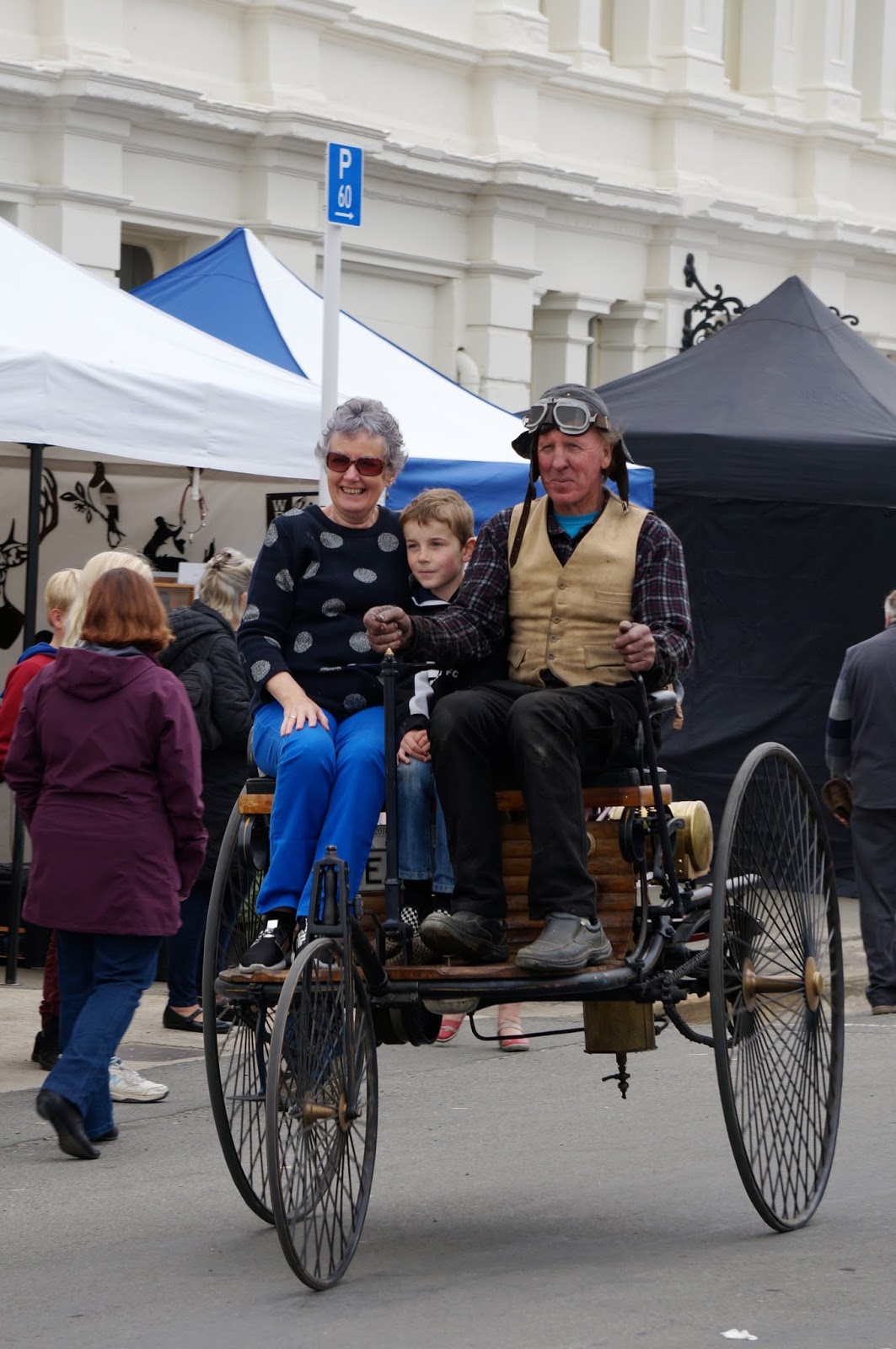This year saw the 29th Oamaru Victorian Heritage Celebrations; a week of heritage themed festivities culminating with the Fete on Sunday, brought to life in the streets of Oamaru. This year the theme was 'crime and punishment'.
One of the things Oamaru is famous for are the Whitestone buildings, made from locally-sourced limestone or appropriately named 'Oamaru stone'. As lumber and other building materials were scarce, Oamaru was hand-mined from the very countryside it was built on. These beautiful buildings, designed by architects Forrester and Lemon, helped transform the desolate plains of the East Otago coastline into a bustling town that in its hay-day, attracted whalers, sealers, gold miners, craftsmen, prostitutes and publicans, and was bigger than Los Angeles was at the time. Although Captain James Cook said in his journals '[the] whole face of the Country appears barren, nor did we see any signs of inhabitants', Maori did live in the area, but as there were less trees, running water and bushland, communities tended to pass through Oamaru to the Waitaki river mouth, down the coast to Kakanui and Moeraki, or up the valley.
To me, rather than celebrating conservatism and a Victorian class system (as many locals perhaps believe to be the case), Oamaru's Heritage Celebrations are about having fun and celebrating the hard-working pioneers who arrived on these shores, and created such a beautiful stone town. I guess a sort of Kiwi thanksgiving. It is also a celebration of aesthetics and diversity, a social anthropological look into how different cultures have grown and changed throughout history. I would love to see some more diversity! Imagine a multi-cultural Heritage Parade, with people from around the world demonstrating what their traditional dress was like in the Victorian era. Of course, industrialised colonial Britain was a very destructive and controlling power (personified in the rubber cogs and plastic ray-guns of the steampunkers?) and I understand why some may question why we are celebrating this specific era. Growing up I simply assumed that it was to match the Oamaru architecture and recreate a filmset-like experience. Again, even this has not been achieved as well as it could have.
Ah well, perhaps in another 100 years?! Enough of my grumbling, here are some Fete day photos.
.
.
.
.
.
.
.
.
.
.
.
.
.
.
.
.
.
.
.
.
.
.
.
.
.
.
.
.
.
.
.
.
.



































Stunning images ... love how you have spotted such details as the whitestone dust on the clothes! Real depth to your work. Love it!
ReplyDelete